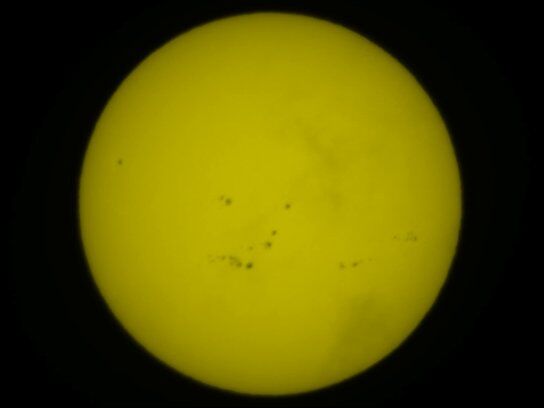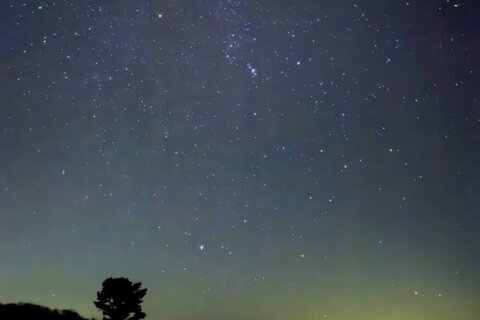
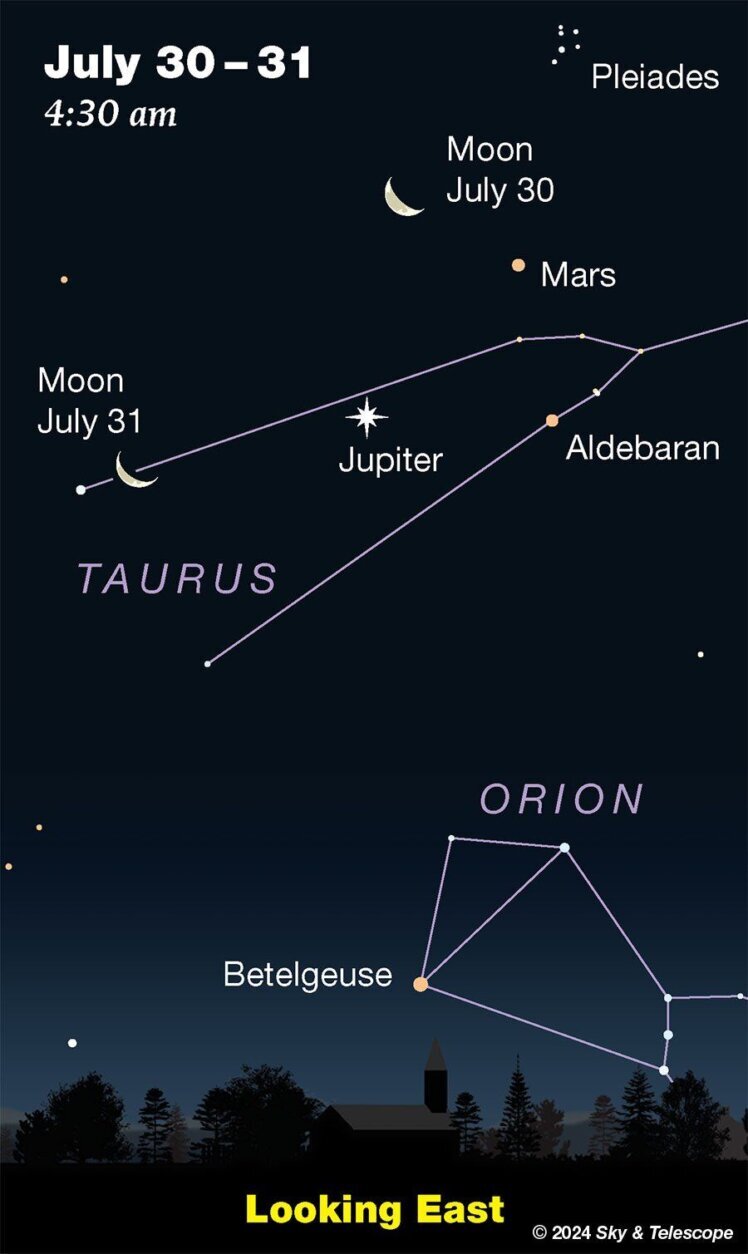

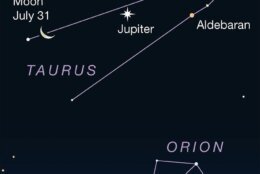
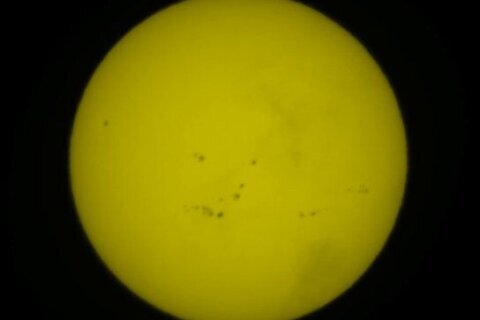
Planets aplenty and active sun!
Starting Sunday night, if you have a clear view of the western horizon 30 minutes or so after the Sun sets, go hunting for Venus and Mercury. The two inner planets will be visible but challenging to find, so binoculars will really help. Venus is going to get higher and brighter in the western sky through summer while Mercury dives toward the Sun in a few days.
In the East, Saturn will be rising as it gets dark and will be visible all night. As seen from Earth, Saturn’s rings almost form a straight line in a telescope and are quite the sight.
Before dawn on the mornings of July 30 and 31, there will be a beautiful pairing of the Waning Crescent Moon — look for Earthshine — with Mars and then Jupiter. The constellations of winter will be the starry backdrop to this view.
If you are lucky enough to have dark skies, be sure to check out the Milky Way, which is entering prime time viewing for the Northern Hemisphere. The ghostly band starts in the constellations Scorpius and Sagittarius in the South and passes overhead through the Summer Triangle.
You can get more information on this week’s sky at skyandtelescope.org.
The Sun has been very active lately and several Coronal Mass Ejections (CMEs) are headed toward Earth with a predicted arrival of July 30. This could create conditions favorable for Aurora. I will be monitoring the National Oceanic And Atmospheric Administration (NOAA) Space Weather Prediction Center and let you know if we need to be on the lookout.
Enjoy!
Follow Greg Redfern on Facebook, X and his daily blog, whatsupthespaceplace.com, to keep up with the latest news in astronomy and space exploration.
Get breaking news and daily headlines delivered to your email inbox by signing up here.
© 2024 WTOP. All Rights Reserved. This website is not intended for users located within the European Economic Area.

